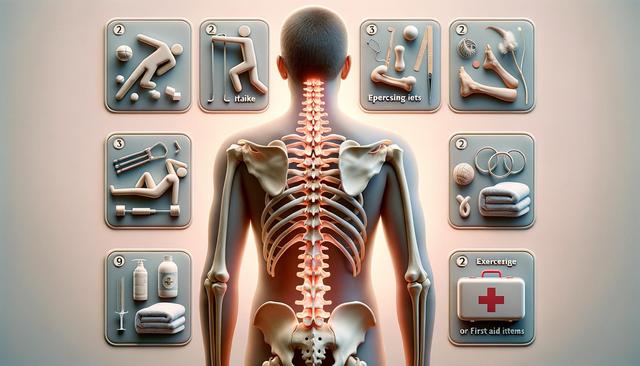Post-Surgical Pain and Discomfort
One of the most common issues patients experience after spinal surgery is lingering or new pain. While some discomfort is expected during recovery, persistent or severe pain may indicate nerve irritation, inflammation, or complications like scar tissue formation. It’s crucial to communicate with your medical provider if pain doesn’t improve over time. Pain can often be managed with a combination of medications, rest, and gentle movement. Some individuals may benefit from guided physical therapy to gradually restore strength and flexibility.
Back pain after surgery can also arise from muscle imbalances or poor posture during recovery. To help alleviate this, patients can:
- Use ergonomic cushions or supportive chairs
- Practice proper lifting techniques
- Apply heat or cold therapy as recommended
Staying within the limits of recovery guidelines can also prevent worsening of symptoms.
Nerve-Related Symptoms
Another common issue after spinal procedures is nerve-related symptoms such as numbness, tingling, or weakness in the legs or arms. These symptoms may be temporary as nerves heal, but persistent signs could suggest nerve damage or compression. Patients should monitor their symptoms and report any changes to their healthcare provider.
To assist in nerve recovery and reduce discomfort, consider the following strategies:
- Gentle stretching approved by a physical therapist
- Low-impact activities like walking or aquatic therapy
- Anti-inflammatory foods and hydration to support healing
Understanding the origin of nerve pain and following a structured rehab plan can help manage these symptoms effectively.
Limited Mobility and Stiffness
Reduced range of motion is a frequent concern after spinal surgery. Patients may feel stiffness in the back or surrounding joints. This limited mobility is often due to inflammation, tissue healing, or fear of movement. Regaining flexibility is essential for a successful recovery and long-term spine health.
Exercises that can support improved mobility include:
- Pelvic tilts on a firm surface
- Knee-to-chest stretches
- Wall slides and standing back extensions
These exercises should be introduced gradually and only under professional guidance. Consistency is key. It’s also important to balance activity with rest to avoid overstraining healing tissues.
Muscle Weakness and Imbalance
After spinal surgery, core and back muscles may weaken due to inactivity or altered movement patterns. Muscle imbalances can lead to further strain on the spine and increased risk of injury. Strengthening the muscles around the spine is essential for ongoing support and stability.
Some effective strengthening exercises include:
- Bridging exercises to activate glutes and lower back
- Bird-dog movements to engage core stability
- Gentle abdominal contractions (drawing in the belly button)
These workouts should be done with proper form and under supervision during the early stages of recovery. Incorporating resistance and balance training as recovery progresses can also improve posture and reduce recurrence of back pain.
First Aid and At-Home Care for Back Pain
Managing back pain after surgery often includes basic first aid and home care approaches. These techniques can provide relief and prevent further irritation. Learning proper body mechanics and modifying daily activities are also important aspects of long-term care.
Useful at-home care methods include:
- Applying ice in the first few days post-surgery to reduce swelling
- Switching to heat therapy after the inflammation subsides to relax muscles
- Using a lumbar roll or cushion for lower back support when sitting
- Practicing gentle breathing exercises to reduce tension
It’s essential to avoid high-impact activities, prolonged sitting, or twisting motions. Wearing a back brace may be recommended temporarily, depending on your doctor’s advice. Listening to your body and pacing your recovery helps prevent setbacks and supports long-term spinal health.
Conclusion
Spinal surgery can be a life-changing procedure, but it’s not without challenges. Understanding common postoperative issues like pain, limited mobility, and muscle weakness is crucial for a smoother recovery. Incorporating gentle exercises and first aid methods can significantly improve outcomes and daily comfort. Always follow medical guidance and prioritize safe movement. With the right care and patience, managing back pain and regaining function is achievable for many individuals on their recovery journey.


